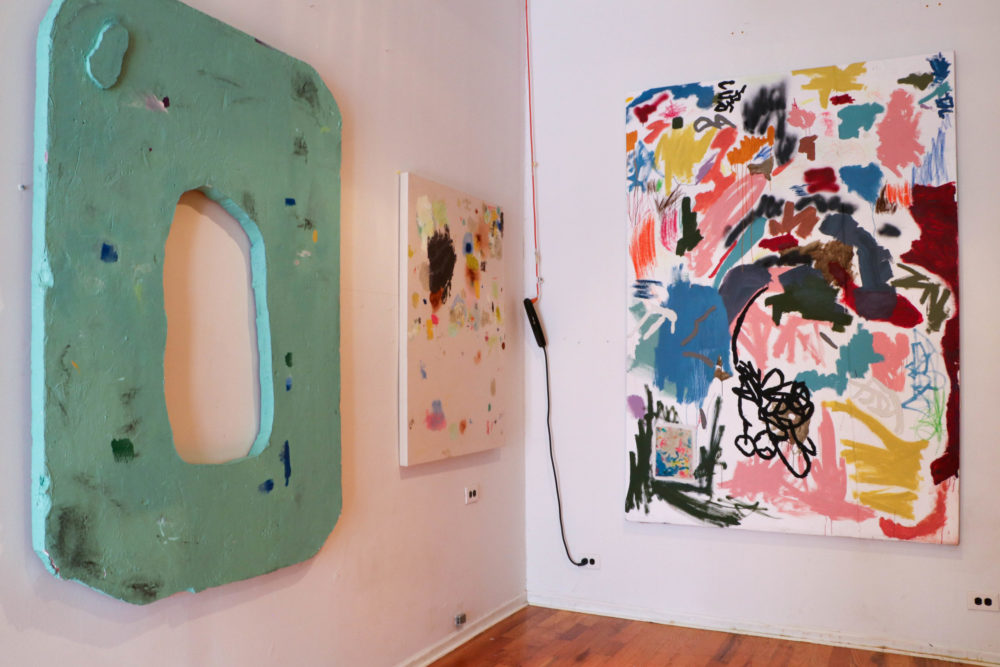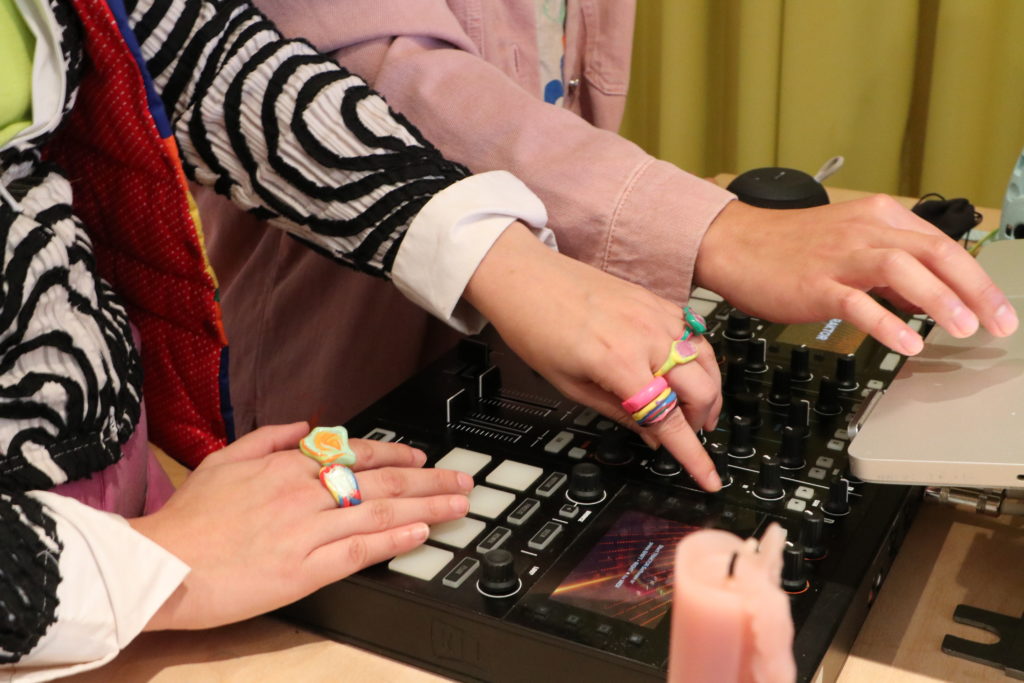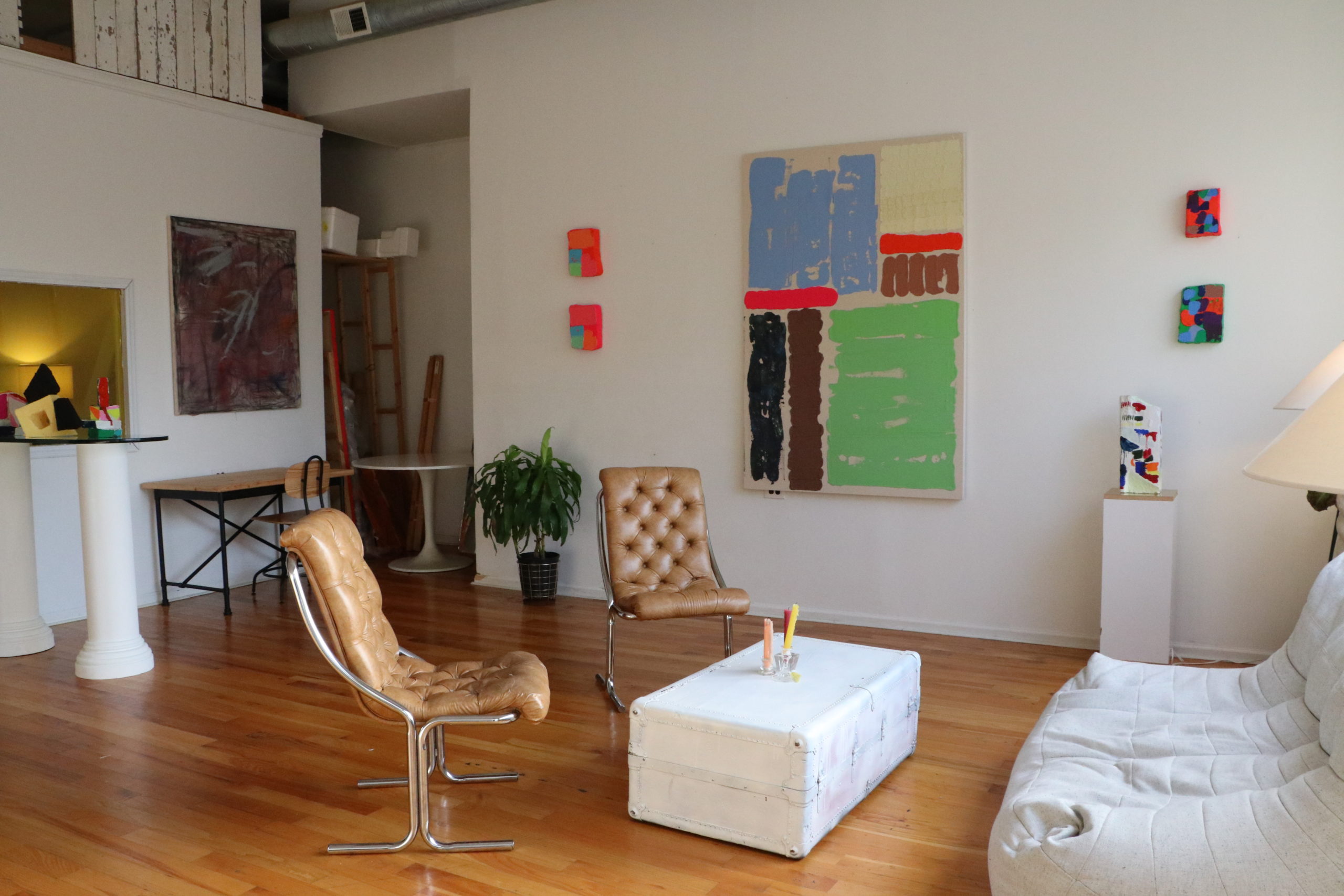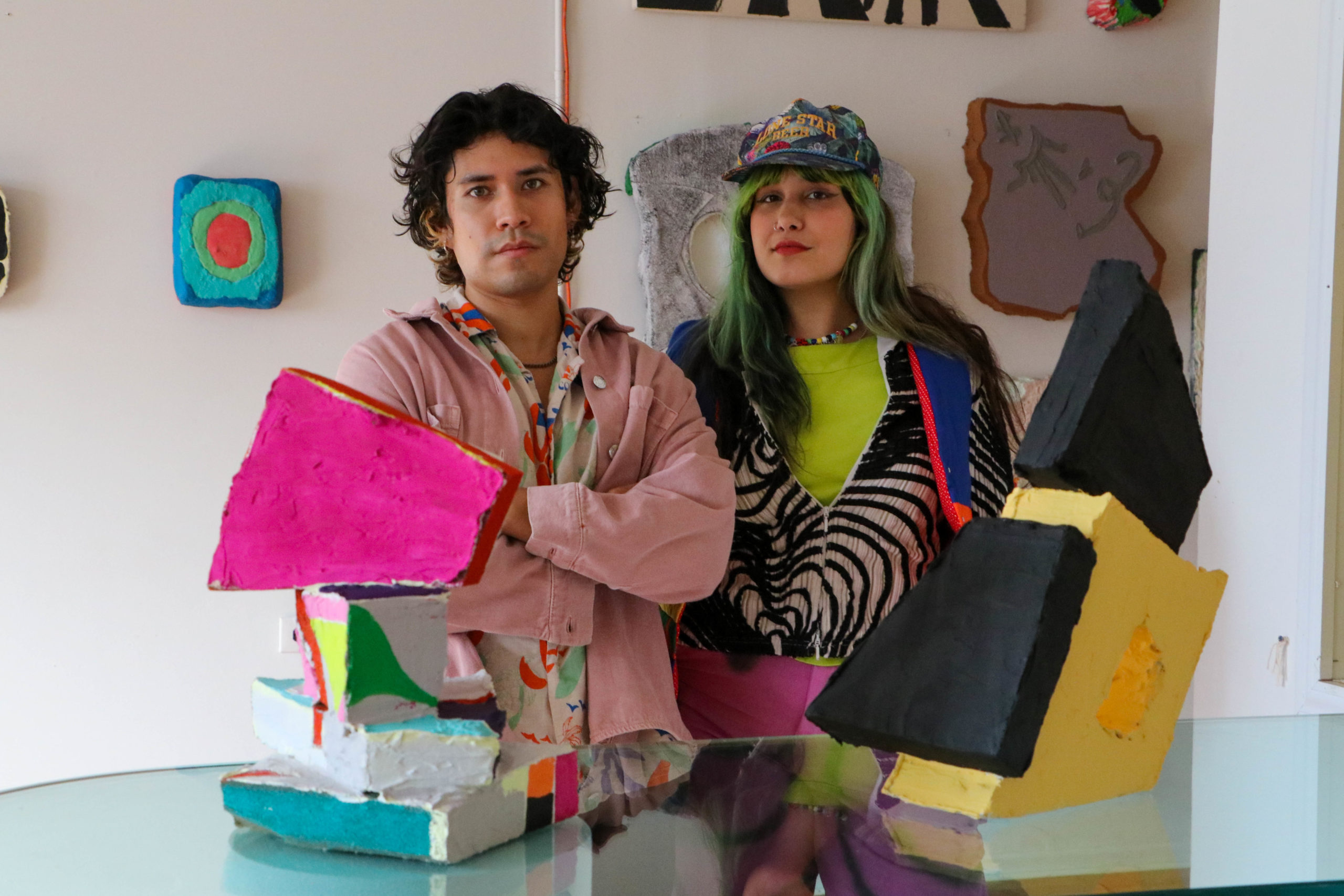Last Saturday night, artists and community members gathered in Bridgeport at GOLA, is a new studio space that features the artwork by Roland Santana, for a fundraiser that supported Indigenous organizations such as Save Bell Bowl Prairie, the American Indian Center, and Semillas y Raices.
In the Pakistani language of Urdu—Santana’s partner Aliya Haq is Pakistani, and they collaborate creatively—GOLA which means a cluster of materials in a spherical shape, or just a spherical object. When stepping into the art space, those shapes take form and you can feel the art—from vibrant abstract paintings to chunky, painted clay rings. “That’s kind of like my main practice,” Santana said. “Making more works that kind of pop out at you,” Santana said.

Overall, GOLA is a space where you can just open up conversations with other artists,” said Santana, a visual artist and “mark maker” from Virginia. He has been based on the South Side for five years with his partner Aliya Haq, an experimental filmmaker from Texas and founder of the film collective Bitchcraft in Chicago. Since their opening, the fundraiser was just one way GOLA plans to connect art with the community. “I think overall [the studio’s purpose is] exposure and including people into the space that hadn’t been in [art] spaces before, or kind of like bridging discussion from people who may have had a more academic background to people who are more self-taught,” Santana said.
Like many artists, the way Santana created his art changed once the pandemic started. “Materials were less accessible during the pandemic, so there was a transition, like ‘Okay, what do I use—in my space, in my neighborhood?’” Santana said. “So, I’d started including a lot more industrial materials, such as concrete plaster, silicone, and foam.”
Santana said that being creative in how he creates his art moved him from painting into sculpture. He explained how he goes into his community and surroundings to find materials for his pieces. “Sometimes they have a shape in itself and kind of like aging values to them,” Santana said. “[The materials] have embedded marks and footprints and all this stuff. I kind of enjoy those small details because I think there is a captured moment in it.”

He cited his inclination for music as an inspiration for his art. “I use a lot of those vibes [from music] and rhythm and sensation to translate into a visual medium,” Santana said.
Maria Herrera, a Columbia College student who grew up in Pilsen but now resides in the south suburb of Lansing, talked about why spaces like GOLA are important to artists in the South Side. “I guess just promoting the whole idea of art, creating, you know, hopefully that’ll inspire the people around the area to create similar spaces,” she said.

Santana hopes to bring more artists to the studio and use the space to house conversations amongst artists. In response to the challenges artists faced during the pandemic, Santana started an online directory and database called Rupture Chicago which showcases BIPOC artists around the city. “Before having this space, I designed [Rupture] to get artists to organize spaces…and just even get them [to be] part of the discussion,” Santana said. “I want to use it as a round-table meeting spot where we can have meetings and discuss, check up on how everyone is doing, sharing knowledge…like how do you pay taxes if you’re an artist, how do you establish yourself as a business, or like what are different grants and share around different grants you’ve applied to before. Kind of like just opening that resource and conversation between each of us.”
To check out the studio space for yourself or book a showing, visit GOLA’s social media account @gola___space.
Isabel Nieves is multimedia producer and Arts Editor for the Weekly.

